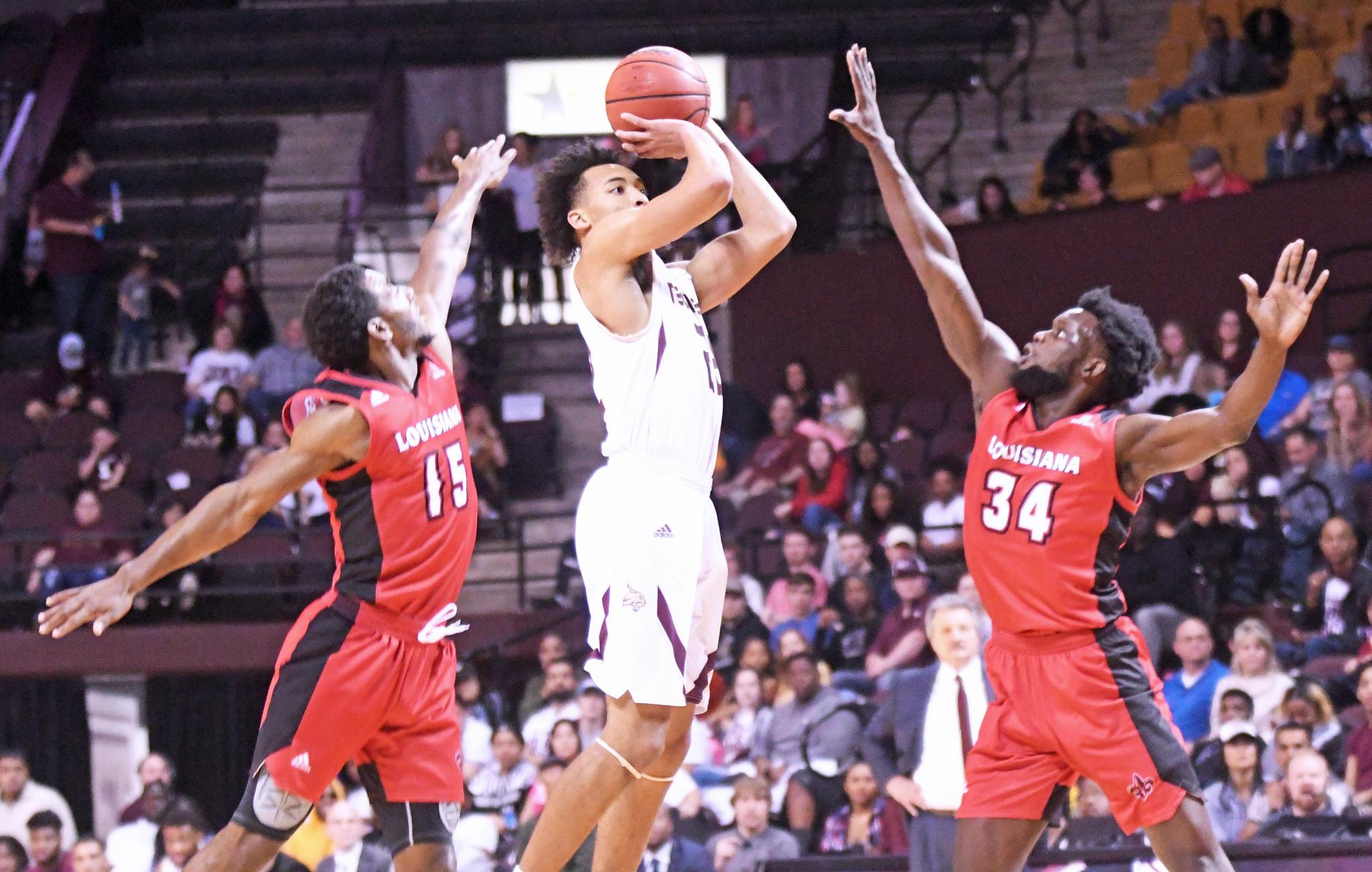
Photo by Gerald Castillo
Commentary: Texas State remains most unfortunate in Sun Belt
Danny Kaspar considers himself “pretty superstitious.”
If Texas State eats at a specific restaurant on a road trip and wins the next day, he’ll try to remember to eat there again the next time the team visits. If the Bobcats get blown out, he’ll make sure they never eat there again.
The head coach isn’t the only one. During the maroon and gold’s current five-game win streak, Director of Basketball Operations Alex Hausladen has worn the same suit to every contest: a grey jacket that covers a Florida Gators-orange shirt and striped blue tie.
The pre- and postgame rituals haven’t worked as often this year, though. The 2019-20 season has been one of the unluckiest for Texas State since Kaspar’s arrival. Despite cracking 20 wins in a second-straight season for the first time since 1977-79, the Bobcats should actually have more.
Washington Wizards assistant coach Dean Oliver developed a way to quantify luck, dubbing it the Correlated Gaussian method. The formula computes an expected win percentage for a team based on its game-by-game point differentials per 100 possessions.
The method shows that the Bobcats should have a .700 win percentage based on the games they’ve played thus far. Instead, with a 20-10 overall record, the team’s actual win percentage is .667, a -.033% difference.
Ken Pomeroy uses the Correlated Gaussian method in his Luck ratings, but also takes strength of schedule into account. Per KenPom, Texas State has the 162nd-strongest schedule among 353 NCAA Division I schools — the toughest of any year in the Danny Kaspar era. The schedule changes the maroon and gold’s Luck rating to -.039%, the lowest since Kaspar’s first year in San Marcos in 2013-14.
Among all Sun Belt teams, the Bobcats rank as the fourth-unluckiest by KenPom behind Georgia State, Louisiana-Monroe and UT Arlington. But a closer look between the schools shows that Texas State might actually be the most hapless of them all.
The Bobcats consistently play in the tightest losses in the conference. In the team’s 10 losses this year, Texas State holds an average scoring margin of -6.2 points, the smallest mark in the league. If you narrow the field to strictly Sun Belt opponents, the average scoring margin drops to -5.3 points — meaning the team’s losses are a full point closer than Georgia State, two points closer than UT Arlington and 6.8 points closer than ULM.
On top of the numbers are multiple, incalculable examples of the maroon and gold getting hamstrung by unfortunate circumstances. The most obvious is also the Bobcats’ most recent loss: senior guard and leading scorer Nijal Pearson had to fly from Boone, North Carolina back to San Marcos for the birth of his child, missing the team’s game against Appalachian State on less than 24 hours notice. Texas State dropped the Jan. 11 contest, 60-57.
(Important note: this is NOT to say Pearson’s daughter is bad luck. She’s actually probably the best good luck charm the team has had in a long time, as the Bobcats haven’t lost a game since her arrival.)
Texas State began their Sun Belt schedule with road games at Georgia Southern, Georgia State, Little Rock and Arkansas State, going 1-3. The team then traveled from Jonesboro, Arkansas on Saturday, Jan. 4, back to Strahan for the team’s first home game on Monday, Jan. 6, against Troy.
Kaspar laments that the extra travel took away some of the advantages playing at home is supposed to provide. The Bobcats fell to the Trojans, 71-63. Troy has won just three games since.
UTA played with the same scheduling tribulations and also went 1-4 to begin league play.
There have been a handful of other swing plays late in games that have hurt Texas State. In the team’s game at Little Rock on Jan. 2, sophomore point guard Mason Harrell launched a 3-pointer that would have put the Bobcats up by one point with 34 seconds left. Instead, the ball rolled around the entire perimeter of the rim before falling out.
Senior forward Eric Terry was sent to the free throw line with a chance to tie the maroon and gold’s game against Troy with 1:52 remaining. Terry, who is shooting .780% on foul shots this season, missed the first of a one-and-one. The Trojans got the defensive rebound and extended the lead to 63-59 on the next possession.
Hausladen doesn’t consider the Bobcats to be unlucky, but did say this year’s team has had to face more adversity than in recent seasons. Pearson and Terry didn’t agree with either notion.
“Most of our losses are on us,” Pearson said. “We didn't rebound the ball well. That's most of the things. We started rebounding, now we’re winning. That's all we gotta do, is rebound.”
“It's not unlucky, it's just the fact that we weren't as focused as we should have been,” Terry said.
Still, the .039% difference equates to a loss of 1.18 wins. It might not seem like much at first glance, but consider that Texas State is currently two games behind regular season champion Little Rock and just one game ahead of third-place South Alabama. An extra win could have been the difference between playing for a share of the conference title in Tuesday’s matchup with the Jaguars instead of battling for sole possession of the No. 2 seed in the league tournament.
The Bobcats’ luck is beginning to turn, though. The team’s triple-overtime victory at UT Arlington on Friday alone bumped them up from 304th in KenPom’s Luck rating to 274th.
Texas State will have to hope it continues Tuesday, playing South Alabama in the regular season finale on the Jaguars’ Senior Day at 7 p.m.











